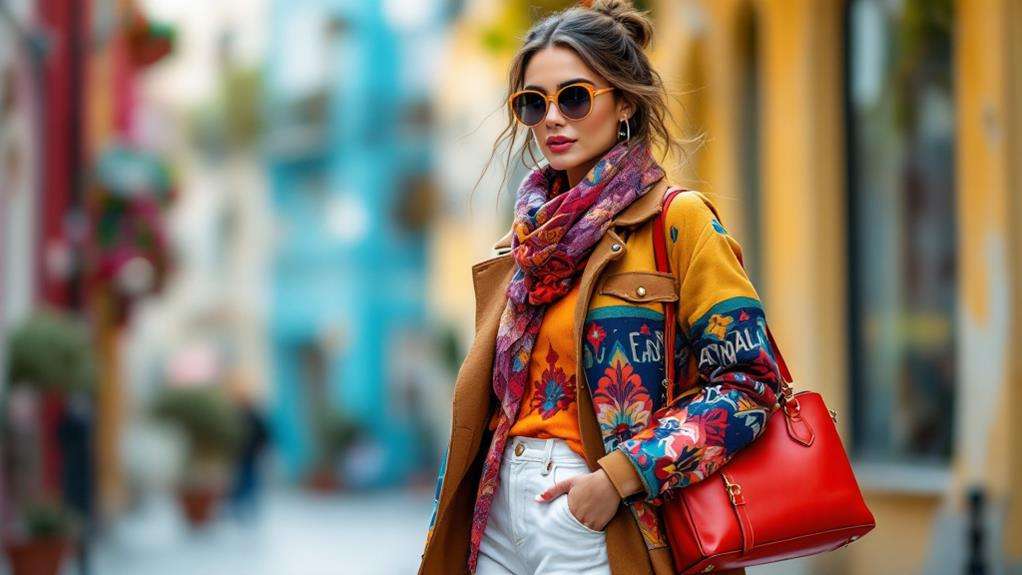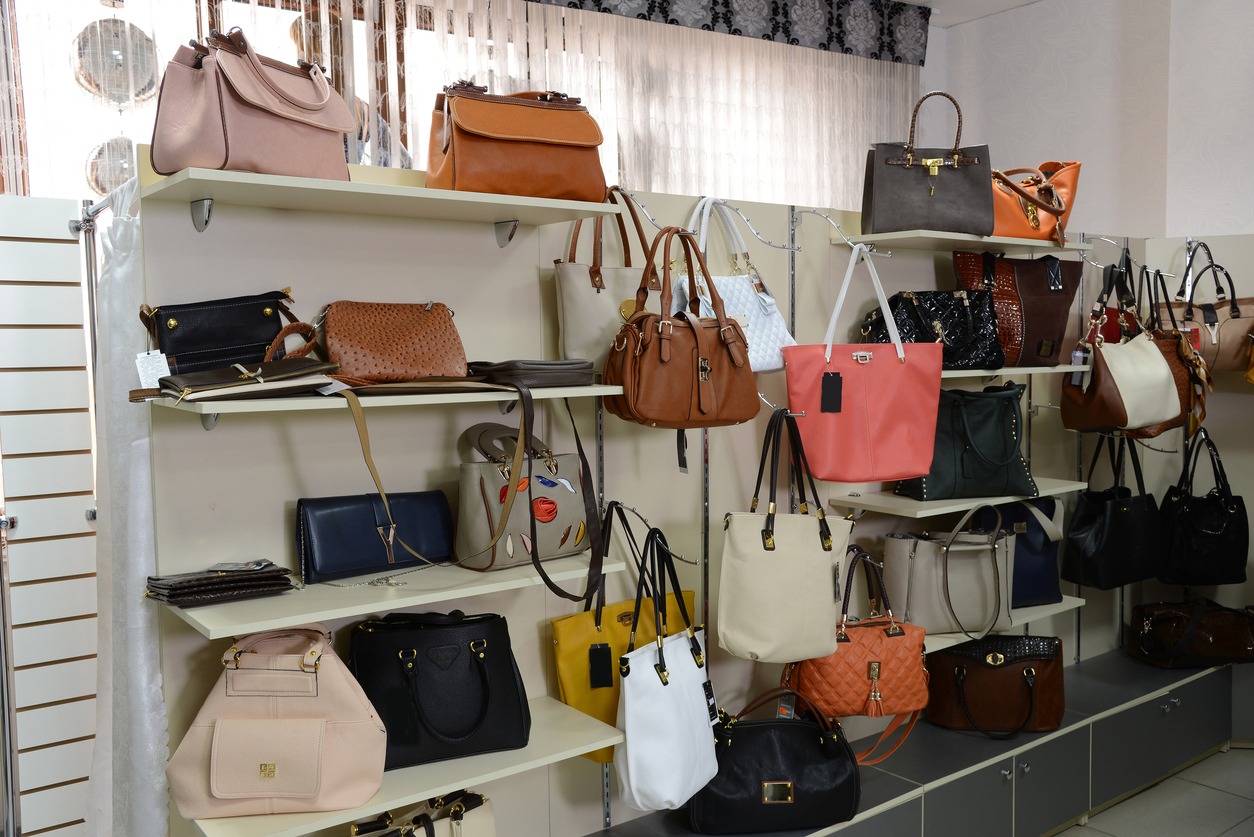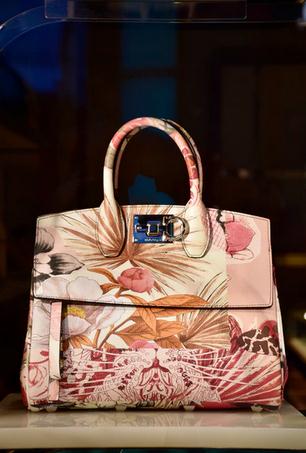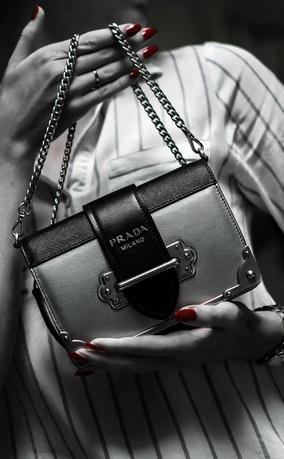Where Did the Term Handbag Come From?

The term "handbag" came about in the early 1900s and surprisingly referred to men's luggage. It combines the Old English "hond" for hand and the Old Norse "baggi" for pack. Before then, any smaller bags women carried were simply "purses" or "reticules." These items evolved, especially during the late 18th century when they became significant fashion accessories. Over time, handbags grew in prominence, particularly during the women's liberation movement, symbolizing both style and independence. If you're curious about the fascinating progression from men's luggage to fashion necessity, there's a compelling story behind every handbag's transformation.
Early Use of Bags
Have you ever wondered how the simple act of carrying items evolved into the complex world of handbags that we recognize today? The history of handbags is a fascinating expedition, starting with early bags that served a purely practical purpose. Initially, both men and women used bags crafted from animal skins and plant fibers. These early versions were primarily for carrying crucial tools and currency. Evidence of such bags has been unearthed in ancient Egyptian burial sites, dating back to 2686–2160 BCE, highlighting their long-standing utilitarian role.
The term "handbag" itself initially appeared in the early 1900s and was originally associated with men's luggage. Over time, it evolved to signify bags designed for personal items, reflecting a shift in societal norms. The introduction of pockets in the late 17th century marked a significant change in the use of bags. As pockets became more common, the visible need for carrying purses diminished, yet they remained a staple for both genders.
Handbags in Antiquity
In the domain of antiquity, handbags were more than just functional accessories; they were symbols of status and artistry. Handbags started as practical items crafted from plant fibers and animal skins in Ancient Egypt, designed for carrying necessities like tools and currency. These early forms, depicted in 14th-century Egyptian hieroglyphics, highlight their longstanding role in human history. As time passed, these bags evolved beyond mere functionality and began to reflect the social standing of their owners.
Wealthy individuals adorned their pouches with luxurious materials, using jewelry and embroidery to display their status. This evolution illustrates the significant cultural role handbags played. By the Middle Ages, handbags became fashionable items, showcasing the period's artistry and craftsmanship and reflecting the societal norms and gender roles of the time.
Here's a concise look at handbags in antiquity:
- Origins: Handbags started in Ancient Egypt, crafted from durable materials for practical use.
- Status Symbols: Ornate designs with jewels and embroidery became popular among the wealthy.
- Fashion Shift: By the Middle Ages, handbags became emblematic of fashion, craftsmanship, and social distinctions.
Handbags in antiquity were indeed more than everyday items; they were a reflection of the cultural and artistic nuances of their times.
Evolution of Handbag Terminology
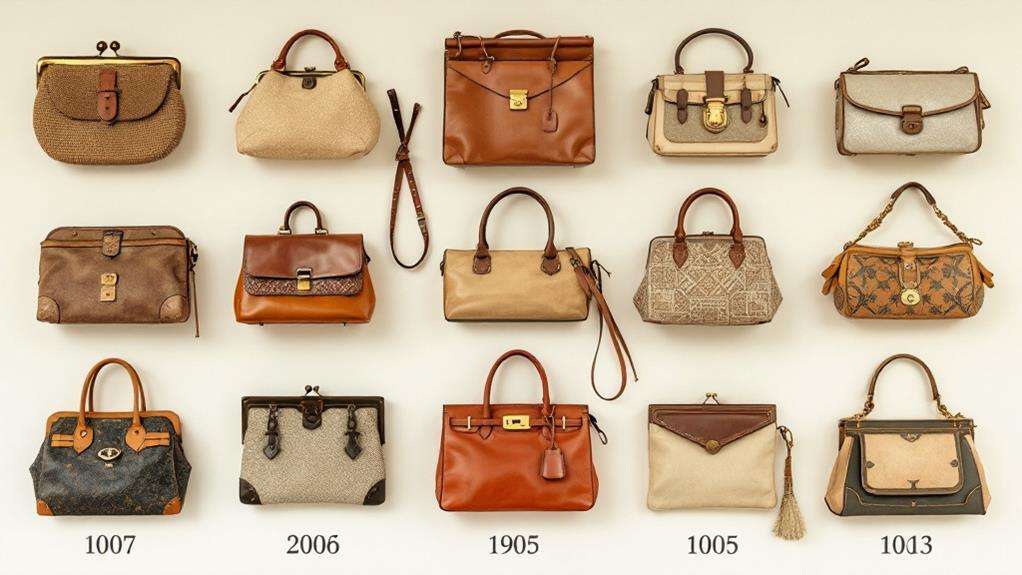
You might be surprised to learn that the term "handbag" didn't always refer to women's accessories. In the 1900s, it originally described men's luggage. This shift in meaning highlights an interesting expedition in fashion history. The word "handbag" itself comes from "hand," based on Old English "hond," and "bag," from the Old Norse "baggi," meaning pack or bundle. Initially, these handbags made for men were practical pieces, reflecting the needs of men's fashion at the time.
Before the term "handbag" became associated with women's bags, smaller personal bags used by women were called "purses" or "reticules." During the 18th century, women's bags began to evolve into slender designs with wrist straps, making them more practical for carrying necessities. This evolution paved the way for the broader acceptance of the term "handbag" in women's fashion.
Medieval and Renaissance Bags
Amid the rich tapestry of history, the bags of the Medieval and Renaissance periods stand out for their dual roles in function and fashion. During the Medieval period, bags weren't just practical; they were status symbols. Take the Courtauld Bag from the early 1300s, for example. It showcased intricate craftsmanship, reflecting the social standing of its owner. These medieval bags were more than just accessories—they were statements.
Fast forward to the Renaissance, where bags took on crucial roles in communication and design. In Italy, the burgeoning courier services relied on sturdy leather bags to transport significant messages. Even Leonardo da Vinci contributed to this time of innovation by sketching a leather bag around 1497, emphasizing the significance of both design and functionality.
By the 16th century, the use of pouches began to highlight differences in gender roles. Men carried smaller pouches attached to their waist belts. Women, on the other hand, wore girdle pouches tucked discreetly under their skirts. This evolution in bag usage marked a shift in how accessories were integrated into daily life.
Here's a quick recap:
- Medieval Bags: Status symbols with intricate designs.
- Renaissance Innovation: Fundamental for communication and design.
- Gender Roles: Distinct pouch usage for men and women.
Transition to Fashion Accessories
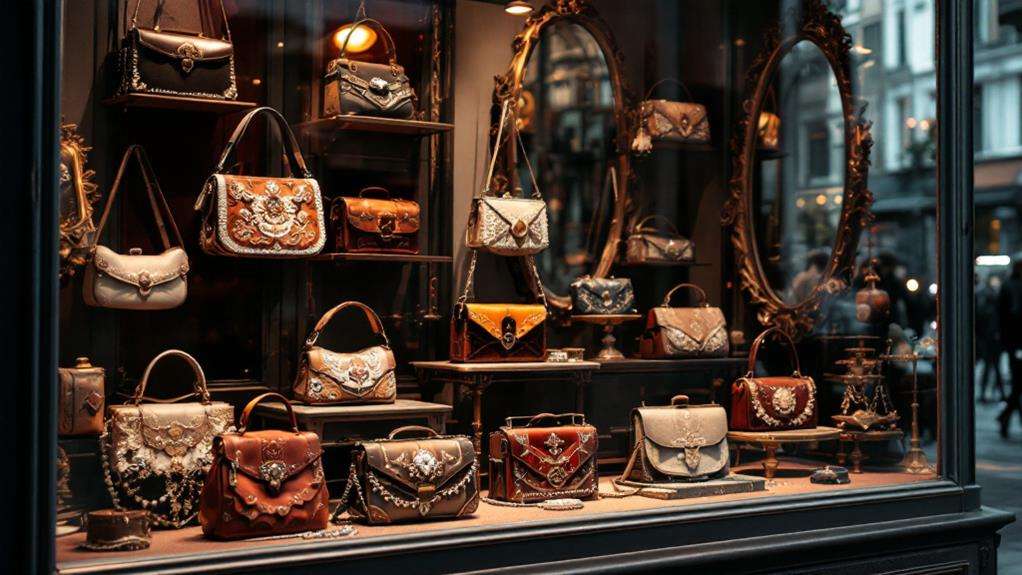
Something remarkable happened as bags evolved from mere practical items to vital fashion accessories. Originally, the term "handbag" referred to men's luggage in the early 1900s. However, it soon changed to describe women's fashion accessories. This shift began in the late 18th century with the introduction of reticules. Women started to adopt these stylish yet practical bags to carry their personal items, sparking the rise of the handbag as a powerful fashion statement.
By the late 19th century, designers like Louis Vuitton began crafting handbags that combined both functionality and luxury. These luxury handbags appealed to women seeking independence and style, marking a significant change in how handbags were perceived. They weren't just about utility anymore; they were symbols of personal expression and sophistication.
Come the 1920s, the handbag industry experienced a wave of innovation. Different designs emerged, influenced by cultural movements and changing fashion trends. Handbags transformed from being merely practical items to becoming coveted fashion accessories, representing wealth and status. As a result, they solidified their role in the 20th century as fundamental elements of personal style and identity.
Handbags and Women's Liberation
As the late 19th century unfolded, handbags became more than mere accessories; they emerged as symbols of women's social status and newfound freedom of movement. With women beginning to travel independently, designers like Louis Vuitton recognized the shift and crafted creative women's handbags that were both practical and stylish. These bags, such as the compartmentalized portmanteau, catered to women's desire for privacy and convenience, reflecting their growing independence.
The evolution of handbags mirrored the broader women's liberation movement, emphasizing autonomy and personal expression. As women gained more rights and entered the workforce, their need for functional yet fashionable accessories grew. Handbags evolved to accommodate their increasing mobility and professional lifestyles. You can see how these changes affected the significance of handbags in women's lives:
- Social Status: A well-chosen handbag became a marker of a woman's social standing and personal style.
- Practical Design: Louis Vuitton's creative designs provided practical solutions for travel and daily activities.
- Symbol of Liberation: Handbags became emblematic of women's independence, reflecting their path toward autonomy and empowerment.
Impact of 20th Century Events
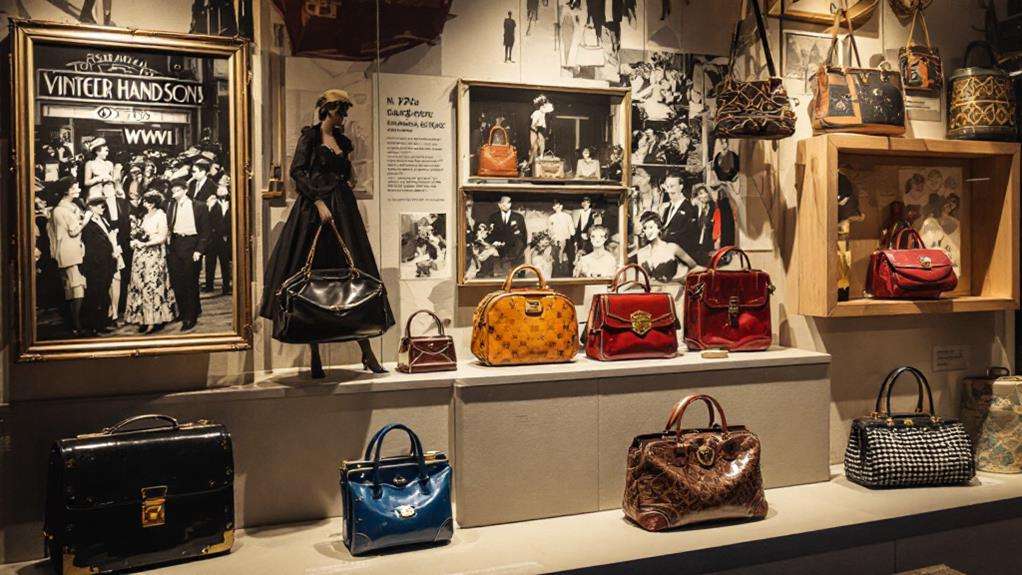
With the dawn of the 20th century, the term "handbag" took on a new life, evolving from its origins in men's luggage to a staple in women's fashion. Early on, the 1920s brought about a design revolution, with handbags inspired by Egyptian art becoming trendy for distinct occasions. This time marked the handbag's transformation into a fashion statement, reflecting the shifting cultural landscape.
During World War II, material shortages forced handbag manufacturers to think creatively. Traditional materials like leather were scarce, so they turned to alternatives like plastic and wood. This innovation not only sustained production but also introduced new styles and textures. Handbags became versatile, adapting to the needs of women managing wartime challenges while still attending various social events.
In the post-war 1950s, the emergence of iconic designer handbags from brands such as Chanel and Louis Vuitton solidified the handbag's status as a cultural icon. These designs became synonymous with elegance and sophistication, making handbags indispensable for distinct occasions. By the late 20th century, societal changes expanded the concept of the handbag, reflecting its integral role in daily life and solidifying its place in popular culture.
Modern Handbag Trends
Today's handbag industry is a lively tapestry, woven with innovation and diverse consumer preferences. Valued at over $40 billion globally, handbags have become indispensable in both fashion and everyday life. Modern trends show a shift towards sustainable and eco-friendly materials, as more consumers choose ethical fashion. Online shopping has transformed how you buy handbags, offering convenience and a vast selection right at your fingertips.
Customization is a standout trend. With customizable handbags, you can personalize your accessory to reflect your unique style. Regardless of selecting colors, materials, or adding monograms, creativity is boundless. Men's handbags are gaining traction too, with brands acknowledging that style knows no gender. These bags often feature sturdy handles and practical designs, catering to the modern man's needs.
Luxury brands like Louis Vuitton and Chanel continue to dominate, but the market is broadening. If you're exploring modern handbag trends, consider these:
- Sustainable Materials: Opt for eco-friendly bags that align with ethical values.
- Customizable Options: Personalize your handbag to make a unique fashion statement.
- Online Shopping: Welcome the ease and variety that e-commerce offers.
These trends highlight how the industry adapts to your changing preferences.
Collecting and Investment Value
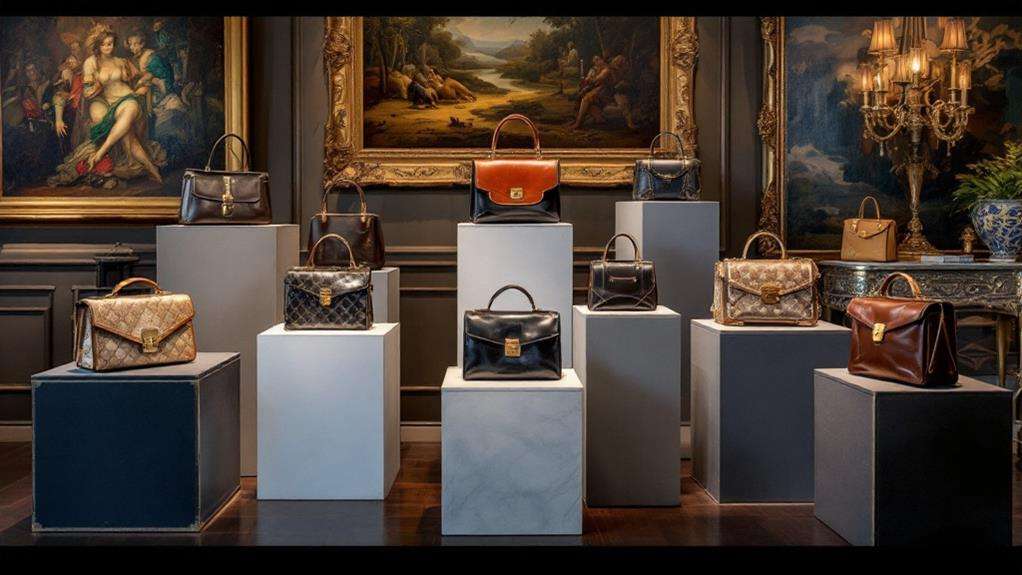
In recent years, the allure of handbag collecting has skyrocketed, turning these accessories into coveted investment pieces. You might be surprised to learn that the popularity of collecting women's handbags surged in the 2000s. This trend was so pronounced that Christie's even established a handbag department in 2014 to cater to the growing interest. The demand for rare and limited-edition handbags has considerably driven up their prices, making them not just fashion statements but substantial investments.
If you're considering diving into this fashionable domain, exclusive auctions are where the action's at. Take, for example, the initial exclusive handbag auction in June 2017 that highlighted brands like Hermès. These bags are recognized as some of the most valuable in the collectible market. Notable auction records include a pink crocodile Hermès Birkin fetching £146,000 in June 2015, and a white crocodile Birkin with diamonds selling for HK$2.9 million in May 2017. Such figures illustrate the impressive investment value these pieces hold.
As you investigate this trend, you'll find that certain high-end handbags can appreciate over time, becoming sought-after assets in the luxury market.

